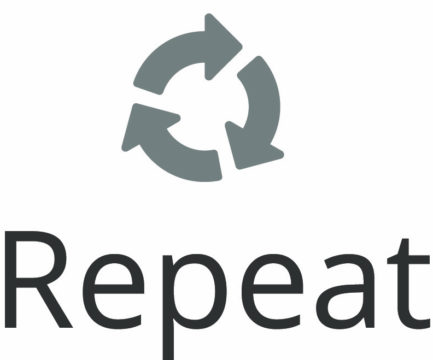I often say, “In fundraising, repetition is the best friend you don’t know you have.”
Many people literally can’t believe I would say something so crazy.
But it’s true. Using repetition as a tool is the biggest lesson that advertising & marketing have to teach us fundraisers.
This post will tell you why that’s true, and how to use this idea to raise more money.
Two Reasons for Repetition
There are two reasons your fundraising materials — and all of your fundraising — should be more repetitive:
- Your donors don’t read the whole thing. They skip and skim.
- Humans often need to hear a message multiple times before they take action. And your donors are humans.
As always, this post is an attempt to explain what we’ve seen in head-to-head testing. Put another way, we know from testing that repeating the right things will increase how much money you raise, and this is an attempt to explain why.
Note: this idea is especially important for smaller organizations who are trying to make ‘the leap’ to the next level in revenue. Being more repetitive is counter-intuitive. It’s something your board or E.D. might push back against. But if you embrace it you’ll start raising more money both immediately and in the long term.
Your Donors (and Potential Donors) Don’t Read the Whole Thing
People don’t read your whole letter . . . or email . . . or newsletter, etc. (Except for your board, they read everything to find errors.)
If you want to make ‘the leap’ to the next level of income, you need to wrap your mind around this. People don’t read/watch/listen to the whole thing. They skim, they jump around.
If you want evidence of this, go check out the work of Siegfried Voegele.
So to increase the chances that your donor sees your main message (usually your call-to-action) you repeat it multiple times. That way, as your donor is skimming your fundraising, there’s a greater chance they will see what you want them to do.
Remember: you go through your fundraising with a fine-toothed comb, reading from the top to the bottom, looking at every detail. But most of your donors just glance at it. Repeating your main idea increases the chances that even your “glancers” will read what you want them to read.
This makes it difficult (at first) to write effective fundraising, by the way. We learn in school to set up an argument, tell a story, and then make our point. But the most successful fundraising tends to make it’s point, tell you why the point is so important, and then make it’s point again. Writing that way is a learned behavior.
Humans Often Need to Hear a Message Multiple Times Before They Take Action
You know this from your own life; telling a busy co-worker something multiple times, or talking to a friend who is doing something else at the same time.
It’s a good idea to assume that your donors are busy, or are looking at your fundraising and doing something else at the same time.
Smart fundraisers use this knowledge to do two things:
First, in their letters and emails, they’ll repeat key phrases and ideas multiple times. For instance, my rule of thumb is that each appeal letter should have three direct asks to the reader to send in a gift today. I usually put those three “asks” in the following three locations:
- Somewhere in the first three paragraphs
- Somewhere in the last three paragraphs
- In the P.S.
Because your donors are skipping around, if you only put your ask in one place in your letter, a whole bunch of donors just got your letter but don’t know you’d like them to send a in a gift. That’s a recipe for raising less money than you could be.
Second, smart fundraisers ask donors to do the same thing multiple times during the year. Because they know that of the donors who saw the message the first time you sent it, not all of them were convinced to make a gift.
Say you’re a community museum that has a hard time raising money with your general appeals, but the one time each year you ask your donors to ‘send a local child to the museum’ you raise a lot of money. Well, next year ask you donors to send a child to the museum twice (and do the things you need to do to make the funds undesignated).
To give you a real-life example, Jeff Brooks tells a great story about an organization that accidentally sent out the same exact appeal letter two months in a row. The same letter to the same people. What to know what happened?
The letter did better the second time!
The Consequences for Your Fundraising
It takes real discipline to use repetition in fundraising. Because when you do, your nonprofit will end up communicating more often to your donors, and communicating about fewer things to your donors.
Here’s a story to illustrate my point. We worked with an organization in the Midwest who raised about $10m per year. They talked about EVERYTHING they did, every program, all the time. They always wanted to say all the things!
We counseled them to make their fundraising simpler and more repetitive. For instance, in each letter and email they should only talk about one of their programs. Their response was an all-time classic:
“Steven, you don’t understand. We’re not a simple organization that just does one thing, like World Vision. We do so much more!”
Now, I’ve done some work for World Vision. They are anything but simple. So I explained that World Vision isn’t simple, but they are disciplined in their donor communications.
So we convinced the organization to get more specific about one program in one letter. That letter raised roughly double any of their other letters that year.
By the way, iIf you follow this advice, it’s totally possible that your board and staff will like your fundraising less. They will think your letters and emails are repetitive. They won’t all hear about their favorite programs or parts of your organization. But you’ll raise more money and will be able to do more good. Whether they like your fundraising or not should not be a core issue. The core issue should be whether your fundraising is effective or not.
And if you use repetition as a tool, your fundraising will be more effective.
Repetition at Year-End
I’d be remiss if I didn’t mention that repetition is one of your core tools to year-end fundraising success.
Your donors are busier than ever, and repeating the same message (and your call-to-action) is one of the best ways you can get noticed by them.
Our Year-End Digital Fundraising Toolkit is on sale right now for more than 40% off. Grab it. You’ll see exactly how to use repetition over the next few weeks – among lots of other tips-n-tricks – and you’ll raise a LOT more money this year!
Steven Screen is Co-Founder of The Better Fundraising Company and lead author of its blog. With over 30 years' fundraising experience, he gets energized by helping organizations understand how they can raise more money. He’s a second-generation fundraiser, a past winner of the Direct Mail Package of the Year, and data-driven.









9 comments on “Your Fundraising Should Be MORE Repetitive”